MAYAN INVASION
Catching Mayan Cichlids with Paul MacInnis
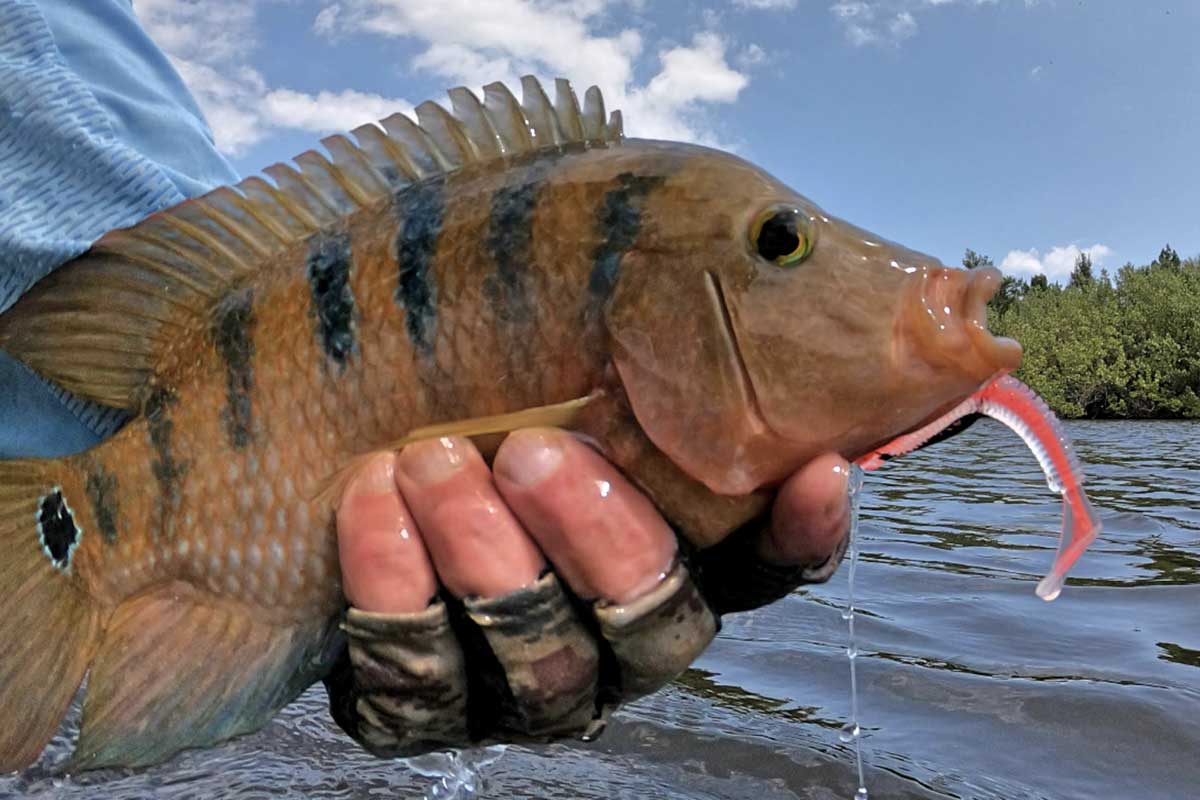
The invasive Mayan Cichlid is a fun-to-catch (and rumored good-to-eat) exotic species rapidly becoming a popular target on the Space Coast.
Exotic Fishing At Home
No doubt you’ve heard of peacock bass, oscars, snakeheads and the plethora of exotic freshwater species that live in south Florida. If you want to catch your first exotic, I have good news for you. You don’t have to make the long drive to south Florida, we have an exotic right here on the Space Coast that you can catch.
Mayan cichlids are native to Central and South America. They were first identified in south Florida in 1983. I caught my first Mayan 25 years ago. It came from a canal along Tamiami Trail in the Everglades. They became a regular catch on my many trips to south Florida to visit in-laws. I caught my first Space Coast Mayan six years ago in the Sebastian River. Since then I’ve watched their numbers increase and their range expand north. I can now reliably catch them a short drive from where I live in Titusville.
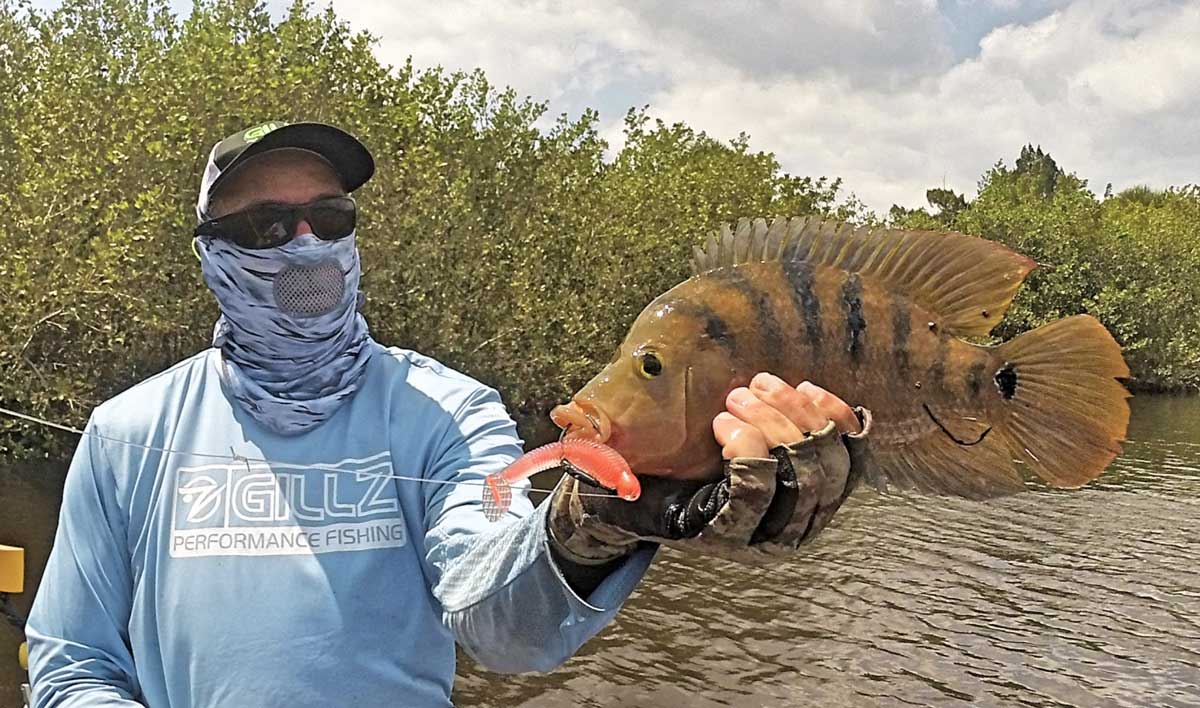
Mayan Cichlids are now among the regular cast of species you’ll find in Space Coast fresh and brackish waters.
What Are Mayan Cichlids?
Mayan cichlids are a deep bodied fish with a profile that looks similar to tilapia. Their color varies from olive-brown to orange with dark, vertical stripes similar to those on a sheepshead. Some specimens have a bright, almost fluorescent, red patch on their chin and throat. They sport a distinctive eye spot on the tail that is usually encircled by a thin ring of turquoise. Mayans grow to typical panfish sizes with most under a pound. The IGFA world record is 2.5 pounds.
Mayan cichlids have been called a bluegill on steroids, and I find that to be an apt description. They are aggressive, tenacious and will give you all the fight you’d hope for on ultralight tackle. They’ll readily take worms, crickets, grass shrimp, minnows and all the other typical panfish baits, but I say, why even bother with bait. They are such aggressive feeders that lures work just as good, if not better. They’ll take jigs, spinners, jerkbaits, flies and even topwater plugs. If it is small enough for them to fit in their mouth, they’ll eat it. I target them on ultralight spinning tackle and especially fly rod. Perhaps their best feature is they readily feed throughout the day, even during the brightest sun when most of the “glamour” species develop lockjaw.
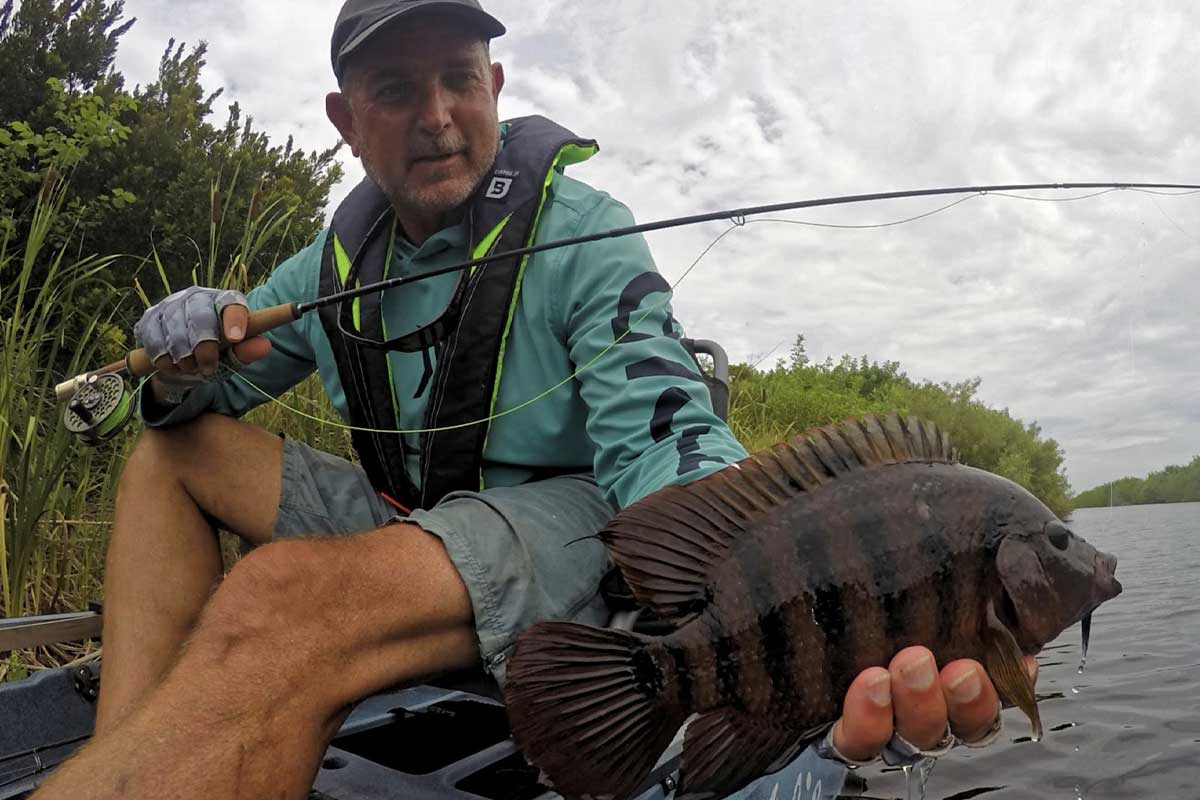
You can find Mayan Cichlids in most any waters you can find bass or bluegill.
Where to Find Mayan Cichlids
Where can you find them? I won’t give away my hot spots, but I’ll give you some tips to find your own. Mayan cichlids are freshwater fish. You might find them in any body of water that holds bass and bluegill, but you have to consider how Mayans could get there since they are not a native species. An isolated, stand-alone pond is not usually a good place to look because there is no way for them to get there unless someone stocked them (which is illegal). Look for bodies of water that are connected to ditches, canals or creeks which provide the Mayans a way to migrate in on their own.
Mayans can tolerate low oxygen levels so you can find them in stagnant ditches and canals that hold few fish other than gar. They can also tolerate fairly high salt levels so you can catch them in brackish water. Almost all the spots where I fish for juvenile tarpon now have Mayan cichlids. After periods of heavy rain, I’ve even found Mayans on the flats, near ditches or creeks that are dumping freshwater into the lagoon.
Mayan cichlids tend to hang out in the same locations as native panfish. You’ll usually find them around weeds, downed trees, culvert pipes and other structure. If the water is clear you can sight fish for them. They are a territorial fish that doesn’t spook nearly as easily as our native species. You can usually aggravate a reluctant Mayan into striking by continually dropping your lure right in their face. They are a forgiving fish. If you miss a hook set, throw back at them because they often will strike again.
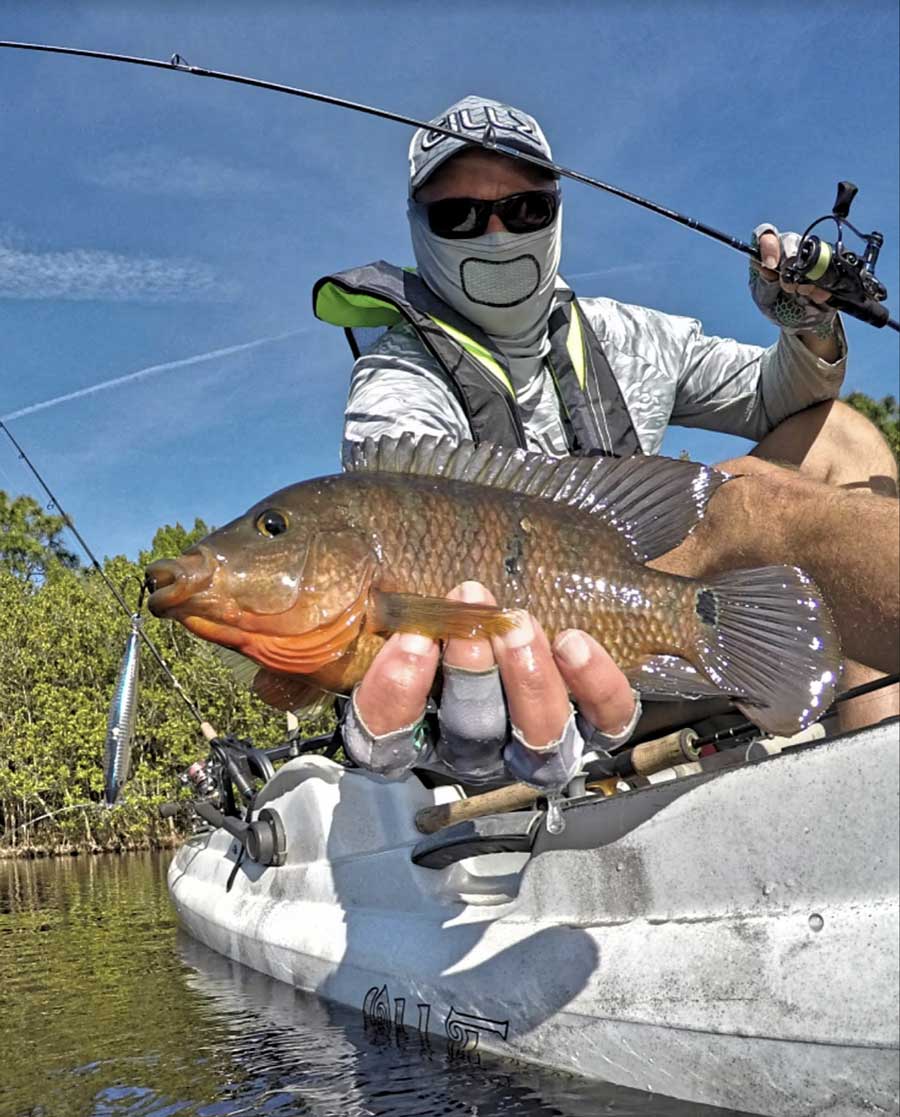
Mayan Cichlids are aggressive, hard to spook, and most always hungry — all of which make them an appealing target even when fishing is otherwise slow.
Can You Eat Mayan. Cichlids?
I’ve never eaten a Mayan cichlid, but they are reportedly quite good. Folks have told me they taste similar to snapper. There are no size or bag limits so you don’t have to worry about keeping a few for dinner.
Get Your FILL!
I’m not about to suggest Mayan cichlids could supplant redfish or snook in popularity. I’d call them a fill-in species. They are great for a quick afternoon fishing fix, or an alternative when rough weather keeps us off the ocean and flats. They are also a great fish for teaching lure and fly fishing to novices and children.



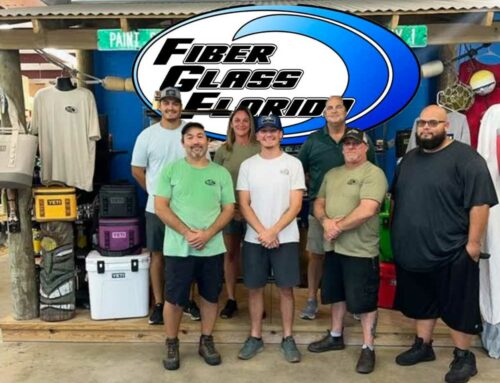
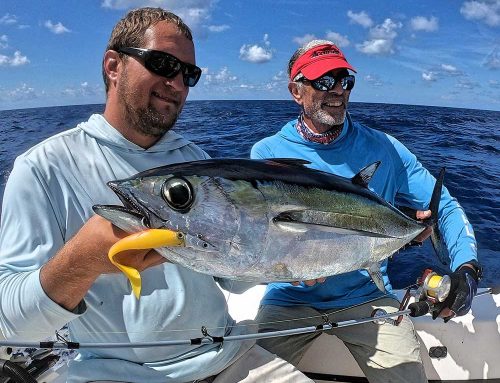
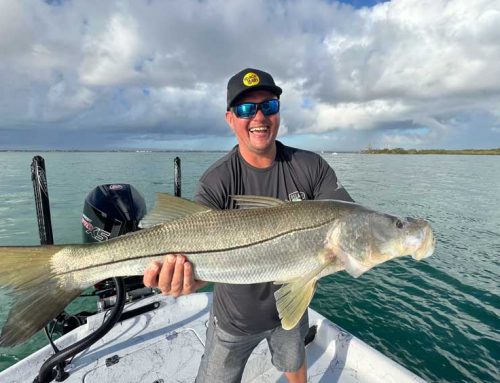


Leave A Comment
You must be logged in to post a comment.